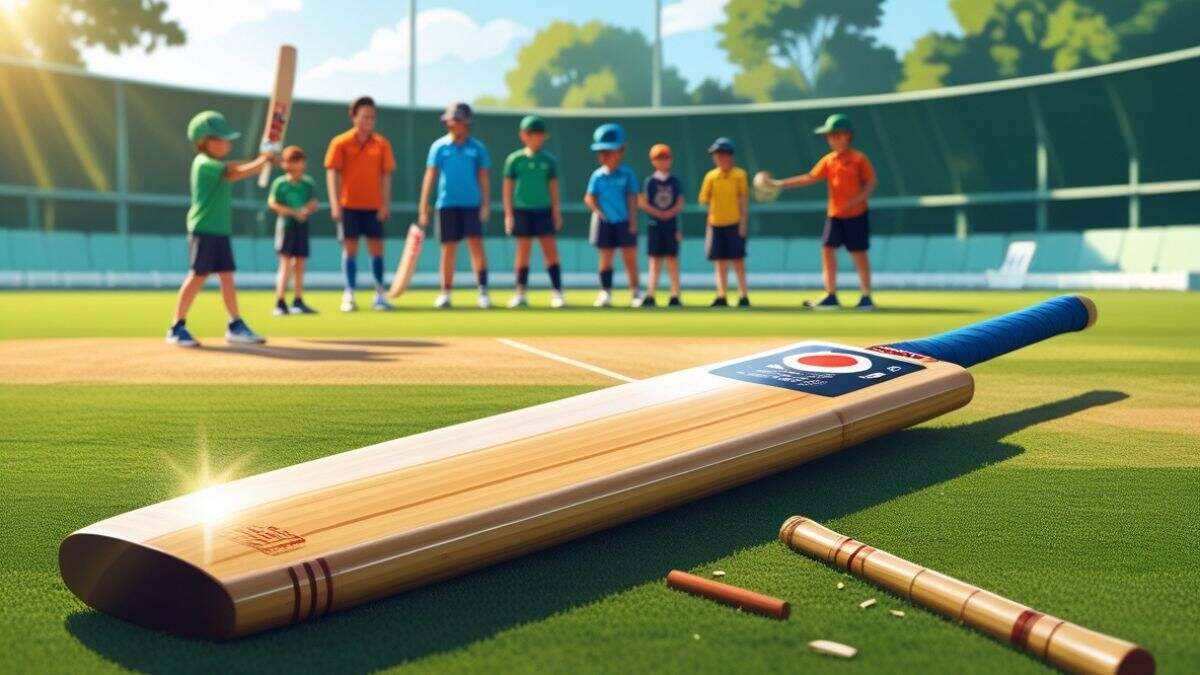A fresh financial boost from the UK government has energized a British Indian entrepreneur whose study showed that bamboo may provide a more affordable and sustainable alternative to cricket bats made of willow. This will help the proof-of-concept move closer to mass-market appeal.
A few years ago, while researching the usage of bamboo as a structural material for houses and schools, Dr. Darshil Shah, a scientist at the University of Cambridge who studies and creates sustainable materials, came up with the idea of bamboo bats.
His Cambridge spin-out CamBoom was chosen earlier this week among 48 projects to get 9 million pounds in UK Research and Innovation (UKRI) funding, which is intended to encourage the creation of new or enhanced goods, services, processes, and technology across a variety of industries.
“We are eager to lead the way in investigating more accessible and reasonably priced alternatives to English willow in cricket bats for amateur players who may otherwise be priced out of the sport,” Dr. Shah said.
Technically, we are certain that bamboo bats are effective, and this financing will enable us to further understand cultural norms and attitudes while promoting inclusive innovations using affordable bats. By increasing the user-acceptability of digitally, or CNC (Computer Numerical Control), produced optimized bamboo bats, the financing will really help us achieve product-user fit,” he added.
Given that more than 200 million people routinely play cricket, the majority of whom live in low- and middle-income nations, UKRI said that it selected CamBoom to satisfy a significant consumer need for affordable recreational cricket bats.
In order to promote viable paths to establishing a broad appeal for bamboo bats with a goal price point of around fifty pounds per bat, the next phase will concentrate on using important stakeholder connections, ranging from players, coaches, suppliers, and manufacturers to cricket administrators and governing organizations. The present prices, which range from 100 to 1,000 pounds per bat, are far more than this amount.
“With bamboo innovation in the forefront, our study attempts to solve a socio-cultural issue of inclusion in sport via an engineering scientific answer. However, we are taking an artistic approach to it, emphasizing user-centered design. Shah says, “What do players want from a cricket bat, and how can we achieve this?”
While I really hope bamboo bats become a success, my ultimate goal is for our effort to inspire a thorough ‘rethink’ of cricket equipment, including its composition, manufacturing process, and disposal.
Shah, a former Thailand under-19 player, adds, “I would desire bats to be created from a range of wood materials, beyond willow, that are locally accessible and locally constructed for people to play with.” For Shah, this is a passion project that blends his profession and pastime.
India, a “big cricketing country,” has the opportunity to include more native woods into bat production, according to Shah. More than four years ago, his investigation revealed a lack of high-quality willow, which may take up to 15 years to develop.
Even though cricket has a long history in England, only few cricket bats are made there, and bat manufacture is listed as “endangered” on the UK’s Heritage Crafts list. More bat manufacture in England would be fantastic with automated, digital manufacturing, Shah says.
The academic focuses on designing and innovating with natural materials by investigating low-energy manufacturing techniques, enhancing structural performance, introducing multifunctionalities, and translating across disciplines and application sectors. He is the co-lead of the Centre for Natural Material Innovation and an Associate Professor in Materials Science and Design at the University of Cambridge.
We always suspected that bamboo would make a lovely bat, so five years ago we tested the idea and created several prototypes. We discovered that, in addition to being aesthetically pleasing, bamboo bats actually function rather well. An iterative cycle of designing, creating, testing, breaking, and redesigning resulted from this. He said, “This fresh financing gives our <

